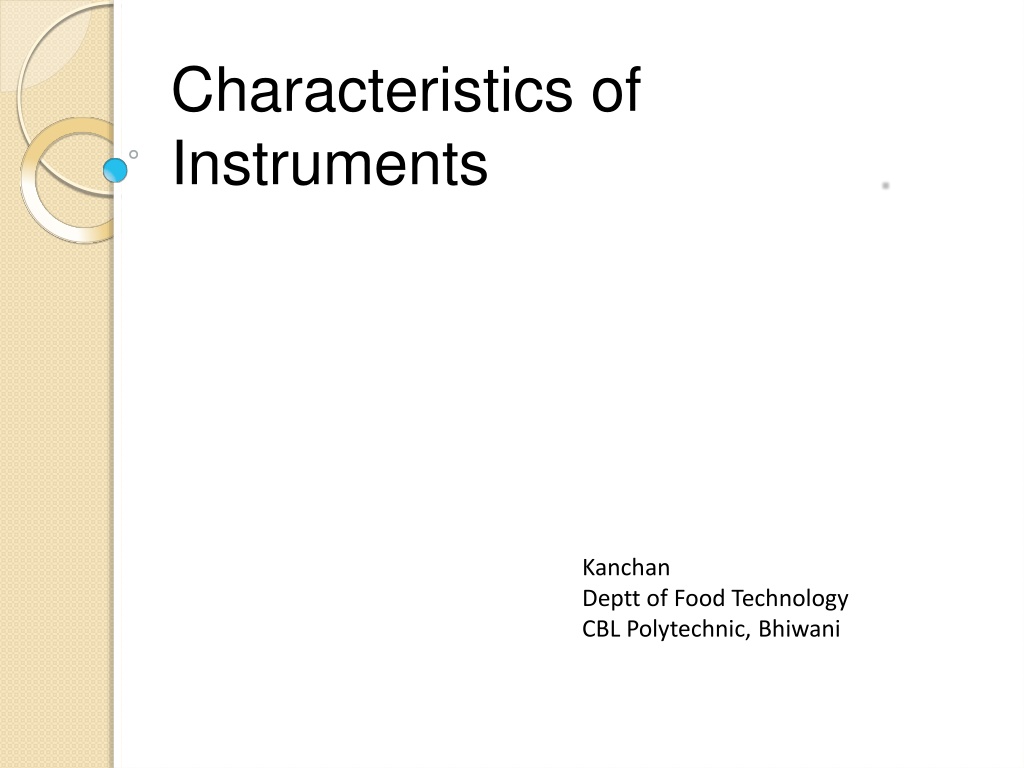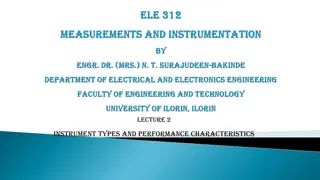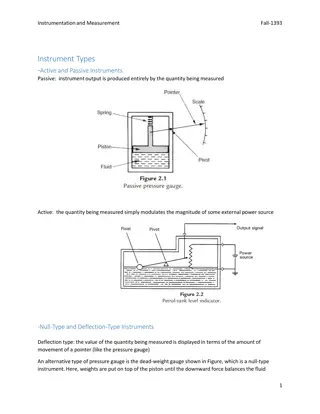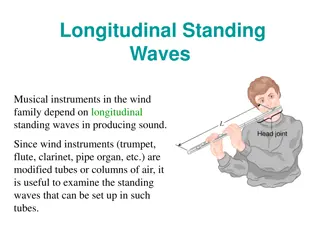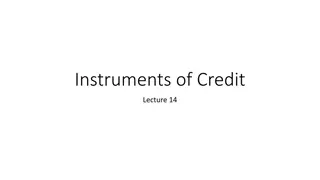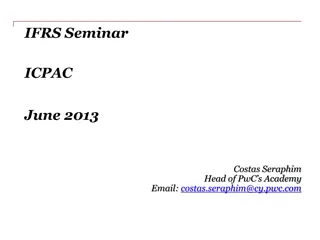Understanding Characteristics of Instruments in Food Technology
Exploring the static and dynamic characteristics of instruments in the field of Food Technology is crucial for accurate measurements. Static characteristics include stability, range, accuracy, sensitivity, reproducibility, hysteresis, precision, and more. On the other hand, dynamic characteristics focus on the responsiveness and behavior of instruments over time. Learn about the importance of accuracy, sensitivity, and reproducibility in ensuring reliable measurements.
Download Presentation

Please find below an Image/Link to download the presentation.
The content on the website is provided AS IS for your information and personal use only. It may not be sold, licensed, or shared on other websites without obtaining consent from the author. Download presentation by click this link. If you encounter any issues during the download, it is possible that the publisher has removed the file from their server.
E N D
Presentation Transcript
Characteristics of Instruments Kanchan Deptt of Food Technology CBL Polytechnic, Bhiwani
Characteristics of Instruments There characteristics of instruments:- are Two types of 1.Static characteristics of instruments 2.Dynamic Characteristics of instruments.
1.Static Characteristics The static characteristics instrument are considered for the instruments which measure unvarying conditions. The static characteristics are defined for the instruments which measure quantities which do not vary with time. of to an be required process
are :- 1. 2. 3. 4. 5. 6. 7. 8. 9. 10. Stability 11. Range or Span 12. Bais 13. Tolerance 14. Hysteresis Accuracy Sensitivity Reproducibility Drift Static error Dead zone Precision Threshold Linearity
1. Accuracy It is the degree of closeness with which an instrument reading approaches the true value of the quantity being measured. The accuracy of a measurement indicates the nearness to the actual/true value of the quantity.
2.Sensitivity Sensitivity is the ratio of change in output of an instrument to the change in input. The manufactures specify sensitivity as the ratio of magnitude of the measured quantity to the magnitude of the response.This ratio is called as Inverse sensitivity or deflection factor.
3.Reproducibility Reproducibility is defined as the degree of closeness by which a given value can be repeatedly measured. The reproducibility is specified for a period of time. Perfect reproducibility signifies that the given readings that are taken for an input, do not vary with time..
4.Drift The drift is defined as the gradual shift in the indication over a period of time where in the input variable does not change. Drift may be caused because of environment factors like stray electric fields, stray magnetic fields, thermal e.m.fs, changes in temperature, mechanical vibrations etc. Drift is classified into three categories: 1. Zero drift 2. Span drift or sensitivity drift 3. Zonal drift
5. Static error It is the deviation from the true value of the measured variable. It involves the comparison of an unknown quantity with an accepted standard quantity. The degree to which an instrument approaches to its excepted value is expressed terms of error of measurement.
6.Dead zone It is the largest changes of input quantity for which there is no output. For e.g. the input that is applied to an instrument may not be sufficient to overcome friction. It will only respond when it overcomes the friction forces.
7.Precision It is a measure of the reproducibility of the measurement that is given a fixed value of variable. Precision is a measure of the degree to which successive measurements other. For example consider an instrument on which readings can be taken upto 1 100thofunit. The instrument has zero adjustment error. So, when we take a readings, the instrument is highly precise. However as the instrument has a zero adjustment error the readings obtained are precise, but they are not accurate. Thus, when a set of readings show precision, the results agree among themselves. However, it is not essential that the results are accurate. differ from each
8.Threshsold Threshold is the smallest measurable input, below which no output change can be identified. While specifying threshold, manufactures give the first detectable output change.
9.Linearity defined Linearity instrument to reproduce its input linearly. Linearity is simply a measure of the maximum deviation of the calibration points from the ideal straight line. Linearity is defined as, linearity=Maximum deviation of o/p from idealized straight line Actual readings is as the ability of an
10.Stability The ability of an instrument to retain its performance throughout its specified storage life and operating life is called as Stability. Stability measurement instruments:-
11.Range or Span The minimum and maximum values of a quantity for which an instrument is designed to measure is called its range or span. Sometimes the accuracy is specified interms of range or span of an instrument.
12.Bais The constant error which exists over the full range of measurement of an instrument is called bias. Such a bais can be completely eliminated by calibration. The zero error is an example of bais which can be removed by calibration.
13.Tolerance It is the maximum allowable specified in terms measurement, it is called as tolerance. It specifies the maximum allowable deviation of a manufactured device from a mentioned value. error that is value while of certain
14.Hysteresis Hysteresis is a phenomenon which depicts different output effects unloading. Hysteresis takes place due to the fact that all the energy put into the stressed parts when loading is not recoverable while unloading. When the input of an instrument is varied from zero to its full scale and then if the input is decreased from its full scale value to zero, the output varies. The output at the particular input while increasing and decreasing varies because of internal friction or hysteric damping. while loading and
2.Dynamic Characteristics Instruments rarely instantaneous changes variables.Their response is slow or sluggish due to mass, thermal capacitance, inductance etc. sometimes, even the instrument has to wait for some time till, the response occurs. These type of instruments are normally used for the measurement of quantities that fluctuate with time. The behaviour of such a system, where as the input varies from instant to instant, the output also varies from instant to instant is called as dynamic response of the system. Hence, the dynamic behaviour of the system is also important as the static behaviour respond in to measured the the capacitance, electrical
The dynamic inputs are of two types: Transient 2. Steady state periodic. Transient response is defined as that part of the response which goes to zero as the time becomes large. The steady state response is the response that has a definite periodic cycle. 1.
The variations in the input, that are used practically to achieve dynamic behaviour are: Step input:-The input is subjected to a finite and instantaneous change. E.g.: closing of switch. Ramp input:- The input linearly changes with respect to time. III. Parabolic square of time. This represents constant acceleration. IV. Sinusoidal accordance with a sinusoidal constant amplitude. I. II. input:- The input varies to the input:- The input changes in function of
The dynamic characteristics of a measurement system are: 1) Speed of response 2) Fidelity 3) Lag 4) Dynamic error
1) Speed of Response It is defined as the rapidity with which an the instrument, responds to the changes in measured quantity. It shows how active and fast the system is. Speed measuring instruments:-
2) Fidelity It is defined as the degree to which a measurement system is capable of faithfully reproducing the changes in input, without any dynamic error.
3)Lag Every system requires its own time to respond to the changes in input. This time is called as lag. It is defined as the retardation or delay, in the response of a system to the changes in the input. The lags are of two types: 1. Retardation lag: As soon as there is a changes in the measured quantity, the measurement system begins to respond. 2. Time delay: The response of the measurement system starts after a dead time, once the input is applied.They cause dynamic error.
4)Dynamic error It is the difference between the true value of the quantity that is to be measured, changing with time and the measured value, if no static error is assumed.
